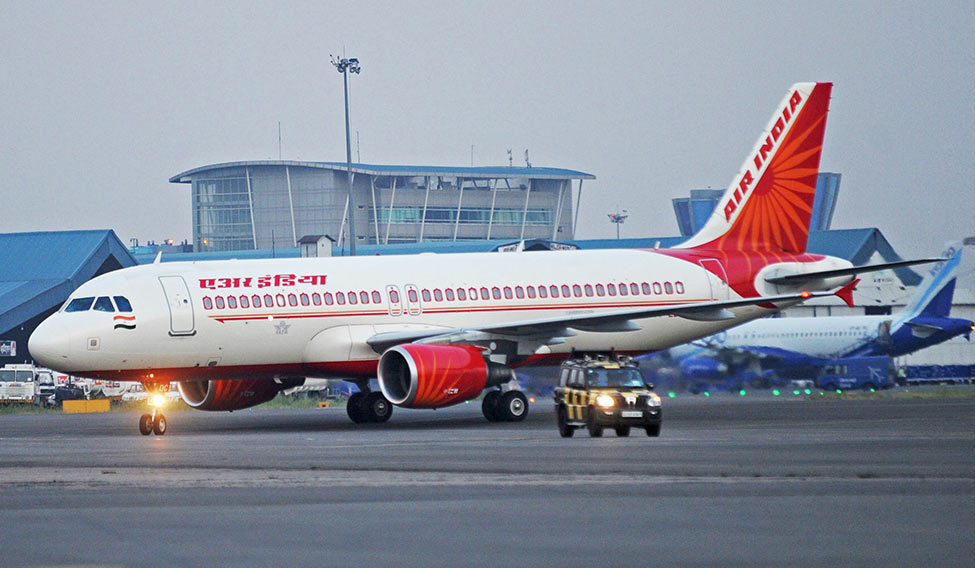An ageing Airbus A320 recently landed Air India passengers and pilots in trouble. On February 11, an A320-231 Classic, a pre-liberalisation era procurement of Air India, failed to take off and had to make precautionary landing twice—in Mumbai and Jodhpur—as its landing gear would not retract. The reason cited was technical malfunction. In Jaipur, the aircraft developed a snag again, and it has been stuck there for more than a month now. The Mumbai-Jodhpur-Jaipur flight had 168 passengers on board.
On February 14, 1990, an Indian Airlines Airbus 320 crashed at the HAL Airport in Bengaluru and caught fire, killing 90 passengers and four crew members. Though the accident report cited pilot error, the Indian Commercial Pilots Association (ICPA) claimed the A320-231 had flaws. “The pilots on board were experienced hands,” said T. Praveen Keerthi, general secretary of ICPA. “They had earlier faced issues with the equipment and during landing, flight controls did not react the way they should have. Our views were later incorporated by Airbus and several changes were brought about in flight control mechanisms.”
Both the Indian Pilots’ Guild (IPG) and ICPA had subsequently issued statements refusing to fly the aircraft. “If I recall correctly, our protest was about the take-off and landing operations of the A320 Classics. The hydraulic system was prone to failure. This causes malfunction in retraction of the entire undercarriage assembly and the landing gear. It is dangerous to attempt touchdown like that,” said Tauseef Mukadam, general secretary, IPG. “The heavy four-wheel landing attachment becomes a problem for the hydraulic system on the aircraft and snags occur.”
On March 8, 2015, the wheels of an Air India flight from Varanasi caught fire. The aircraft had an emergency landing in Delhi after its hydraulic levels dropped and there was oil leakage. It was this leakage of oil onto its tyres and subsequent friction during landing that caused the fire, said a DGCA investigation report.

“With the A320 Classic, emergency landing was becoming a norm every day for us,” said Captain Anant Diwan, regional president (north), ICPA. According to him, it was a number of incidents in 2015, both in India and abroad, that made Indian pilots wary of flying these 168-seat planes.
“The classic A320 aircraft, which are 26 years old, are being operated with repetitive snags, endangering flight safety. The DGCA [Directorate General of Civil Aviation] should not permit AI to operate these lethal snag-prone classic aircraft,” the ICPA wrote in a letter to DGCA, after Air India threatened action against pilots who refused to fly the ageing aircraft.
Several incidents involving the A320-200 Classic, too, have been reported recently. In January, the engine of a Delhi-bound Indigo flight caught fire during take-off in Mumbai. In February, another Indigo flight failed to take off from Visakhapatnam. The aircraft was later pushed back to the runway and could depart only after repairs.
Air India has about twelve A320-231 Classics, flying mostly on domestic routes and between non-metro cities. Some are also pushed to service on the busier routes depending on seasonal demands.
“We have decided to retire the A320-231s over the course of the next few years. This year we are planning to retire about five of them and replace them with the A320 Neo on some of our domestic routes that are currently served by the A320 Classic,” said Ashwani Lohani, chairman, Air India.
Aviation officials insisted that all aircraft with the national carrier are regularly checked to evaluate their airworthiness before flying. “The recent incident [Mumbai-Jaipur flight] was reported to us and we have sought an explanation from Air India’s maintenance team over the malfunction,” said a DGCA official, seeking anonymity.
The official said that all airlines followed a rigorous maintenance schedule. “With the kind of maintenance schedule available with us, there is no reason that justifies disallowing these A320-231s from flying. Yes, there are issues with availability of parts at a given place sometimes, but those concerns are always taken care of or a plane is kept grounded until the time it gets resolved,” he said.
Acknowledging the problems with its ageing aircraft, an Airbus spokesperson, in an email interaction with THE WEEK, said, “Aircraft are designed to have a service life of typically 30 years. Airbus supports all customers in maintaining their current and future aircraft fleets, including the provisioning of spare parts. The A320 has 99.7 per cent dispatch reliability [ready to fly] and is one of the most widely used aircraft.”
Aviation experts, however, pointed to the lack of properly trained staff with DGCA to evaluate air safety and certify airworthiness. “DGCA safety audits are mere paper exercises. They function more as facilitators for airlines than as a regulator. Passengers’ safety and comforts are secondary,” said Mohan Ranganathan, former chairman of the Civil Aviation Safety Audit Committee, an independent body under the ministry of civil aviation. Many airlines hide behind technicalities to get their airworthiness certificates cleared by DGCA, he said, even when their problems are repetitive. And, Ranganathan has a piece of advice for profit-driven airlines: “It is not just the bottom line that is important but safety has to be paramount for any airline of any repute.”







